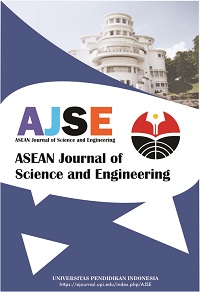Review of Applications of Ground Penetrating Radar as an NDT Tool
Abstract
Keywords
Full Text:
PDFReferences
Anderson, N. L., Ismael, A. M., and Thitimakorn, T. (2007). Ground-penetrating radar: a tool for monitoring bridge scour. Environmental and Engineering Geoscience, 13(1), 1-10.
Bristow, C. S., and Jol, H. M. (2003). An introduction to ground penetrating radar (GPR) in sediments. Geological Society, London, Special Publications, 211(1), 1-7.
Hildebrand, J. A., Wiggins, S. M., Henkart, P. C., and Conyers, L. B. (2002). Comparison of seismic reflection and ground‐penetrating radar imaging at the controlled archaeological test site, Champaign, Illinois. Archaeological Prospection, 9(1), 9-21.
Knight, R. (2001). Ground penetrating radar for environmental applications. Annual Review of Earth and Planetary Sciences, 29(1), 229-255.
Li, S., Li, S., Zhang, Q., Xue, Y., Liu, B., Su, M., and Wang, S. (2010). Predicting geological hazards during tunnel construction. Journal of Rock Mechanics and Geotechnical Engineering, 2(3), 232-242.
Masini, N., Persico, R., and Rizzo, E. (2010). Some examples of GPR prospecting for monitoring of the monumental heritage. Journal of Geophysics and Engineering, 7(2), 190-199.
Plati, C., Loizos, A., and Gkyrtis, K. (2020). Assessment of modern roadways using non-destructive geophysical surveying techniques. Surveys in Geophysics, 41(3), 395-430.
Santos-Assunçao, S., Perez-Gracia, V., Caselles, O., Clapes, J., and Salinas, V. (2014). Assessment of complex masonry structures with GPR compared to other non-destructive testing studies. Remote Sensing, 6(9), 8220-8237.
Tarussov, A., Vandry, M., and De La Haza, A. (2013). Condition assessment of concrete structures using a new analysis method: Ground-penetrating radar computer-assisted visual interpretation. Construction and Building Materials, 38(2013), 1246-1254.
Walubita, L. F., Scullion, T., Leidy, J., and Liu, W. (2009). Non-destructive testing technologies: Application of the ground penetrating radar (GPR) to perpetual pavements. Road Materials and Pavement Design, 10(2), 259-286.
Wu, Y., Shen, F., Yuan, Y., and Xu, D. (2019). An improved modified universal ultra-wideband antenna designed for step frequency continuous wave ground penetrating radar system. Sensors, 19(5), 1045.
DOI: https://doi.org/10.17509/ajse.v2i2.37975
Refbacks
- There are currently no refbacks.
Copyright (c) 1970 Universitas Pendidikan Indonesia

This work is licensed under a Creative Commons Attribution-ShareAlike 4.0 International License.












